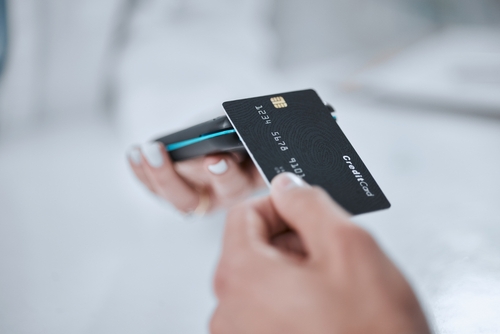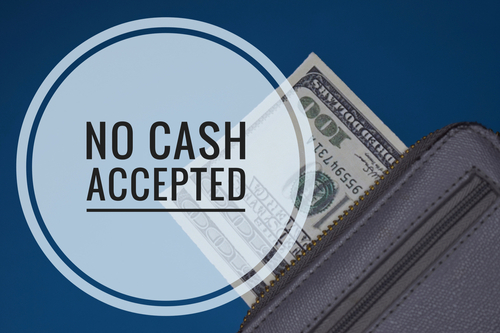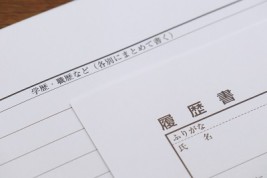GTalent, a job-hunting and job-changing agent for foreigners, hear from foreigners who come to Japan for work, such as “Can we still only use cash in Japan?” “Is there a place where cashless services can be used in Japan?”
From foreigners coming to Japan, it’s very anxious that they don’t know what can be used as a payment method when they buy something.
In this article, We would like to introduce how much cashless society is in Japan compared to overseas, and the recommended cashless payments that can be used in Japan.
Contents
Status of cashless payments in Japan and overseas

Cashless payment situation in Japan
According to data from the Ministry of Economy, Trade, and Industry, the diffusion rate of cashless payments in Japan was less than 20% as of 2016, which is low compared to other developed countries.
Reference:Ministry of Economy, Trade and Industry/ Current status and significance of cashless
Also, according to this Ministry of Economy, Trade, and Industry material, the reasons why cashless payment is not prevalent in Japan are as follows.
- Reassurance for the cash
- Many choices of payment
Reassurance for the cash
Unlike overseas, there is almost no distribution of counterfeit bills in Japan. Therefore, life is based on the assumption that the received banknotes are genuine.
the distribution of counterfeit bills has become a major social issue overseas, and the expanse of cashless payments was essential to reduce the distribution of counterfeit bills. In Japan, the distribution of counterfeit bills is lower than overseas and it is said to be one of the reasons for the slow spread of cashless payments.
Many choices of payment
There are various methods of cashless payments that are mainly used in different countries. For example, in South Korea, credit card is the most commonly used cashless payment method. In China, QR code payments such as “Alipay” and “WeChat Pay” are the mainstream.
In Japan, unlike China or other cashless top countries, many companies offer cashless payment methods, and there are various options such as PayPay, Merpay(Mercari), and LINE Pay even in only QR code payments. Nothing of mainstream service causes the slow penetration of cashless payment in Japan.
Cashless payment situation at Overseas
As mentioned above, according to the Data of the Ministery of Economy, Trade and Industry , South Korea, the United Kingdom, and China (96.4%, 68.6%, 65.8%) have prevailed the cashless society much more than Japan(19.9%).
Overseas, the government has led the promotion of cashless payments, reducing the opportunity of counterfeit bill circulation and the cost of issuing new bills.
In Japan, it is difficult for the government to penetrate the people with political force, and because many elderly people have a strong resistance to cashless settlement, the introduction is not progressing well.
Advantages and Disadvantages of Cashless Payment in Japan
Advantages of cashless payment in Japan
From now on, We would like to introduce some of the advantages of using cashless payment in Japan.
- Reduce the waste of Counting Cash
- Abundant Points and Benefits
Although there are similarities with other countries, each company has unique points and benefits, we can say it is a characteristic of Japan.
Reduce the waste of counting cash
In Japan, not only bills but also small changes are used, so when cash is used for accounting, it is surprisingly time-consuming to count cash.。
Within the case of cashless payments such as credit cards and contactless payments, you do not need to count the cash, so you would be able to omit this little action and perform smooth accounting.
Abundant Points and Benefits
Among companies that provide cashless payment services, points can be provided and campaign benefits can be used according to the amount spent.
For example, there are benefits such as discounts on products and travel tickets, payment with possession points, etc.
Especially in Japan, each store often has its point system. Its own “point card” is often issued. Therefore, in Japan, point cards often accumulate in the wallet when you notice it.
This trend does not change even for cashless payments, each payment company has its points for cashless payments, and each of them has tie-ups with different retail stores, so there are many various points and discounts for consumers in Japan. These often confuse consumers.
Disadvantages of Cashless Payment in Japan
Below, We would like to introduce the main disadvantages of cashless payment in Japan.
- Limited number of stores that we can use cashless payment
- Lack of seamless links with bank accounts
- Security concerns
Limited number of stores that we can use cashless payment
In recent years, the number of stores handling cashless payments has increased little by little, but according to the Ministry of Economy, Trade, and Industry, the diffusion rate in Japan is still below 20%. In other words, there are limited places available.( Data of the Ministery of Economy, Trade and Industry )
Also, the cashless payment service in Japan is assumed to have a higher fee for member stores than other countries, and many stores can only accept cash. Even some major retailers have not yet introduced cashless payments.
There are numerous types of cashless payments, so it is necessary to confirm whether you can make cashless payments and what kind of cashless payments you can use before entering the store.
Lack of seamless links with bank accounts
In Japan, debit cards are less popular than in other countries, and in most cases, even with electronic payments using smartphones, which are necessary to bother charging from a bank account and linking with a credit card.
Also, depending on the electronic payment application on the smartphone, the bank or credit card company that is linked may be different, so even if you set it up, you can rarely use the bank account you own.
Therefore, when using the electronic payment service on smartphones, it takes time and effort to set up and link and many people give up during registration.
Security concerns
Not only cashless payment but also many useful services are emerging with the development of IT, but the most important thing is the “security” when using these services.
By using cashless payment, your registration information may be obtained illegally, and “fictitious billing” or “leak of personal information” may occur.
Even in Japan, in the cashless payment service started by Seven-Eleven, the largest convenience store, registration information was obtained illegally, and many people were billed that they could not remember.
There are few counterfeit bills in Japan, but cashless payment services are behind other countries, and numerous companies have joined the cashless payment service and some companies are still worried about security.
Cashless Payments that can generally be used in Japan
In the table below, We would like to introduce some cashless payment services that can be used in Japan.
| Credit Cards | Debit Cards | Contactless IC | QR code Payment |
|---|---|---|---|
The most cashless payment method used in Japan still been the credit card payment. Although debit cards have become more popular than before, they are still rarely used, and more recently, contactless ICs and QR payments are increasingly used.
Conclusion
Japan is still an inconvenient country when it comes to cashless payments, although in 2019, the government also started to promote cashless payments with a strong focus. Thanks to that, the spread of QR codes payments such as PayPay and LINE Pay is accelerating to prevail.
For foreigners coming to Japan from now on, please refer to the cashless payment that can be used in Japan in advance through this article.










